#wildlife: mongolia
Text

A Przewalski's horse stallion (Equus przewalskii) in Mongolia
by Soyolbold S
#przewalski's horse#mongolian wild horse#tahki#equines#equus przewalskii#equus#equidae#perissodactyla#mammalia#chordata#wildlife: mongolia#wildlife: asia
2K notes
·
View notes
Photo
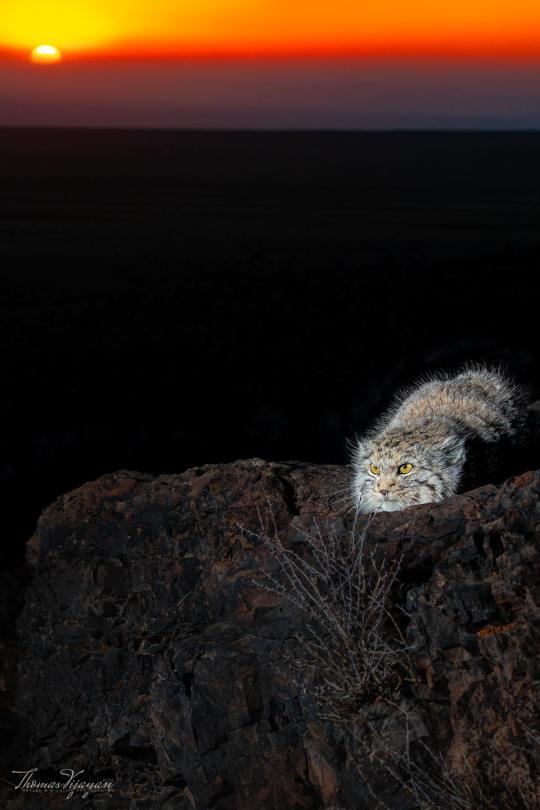
Pallas's cat in Mongolia
Photographed by Thomas Vijayan
#Pallas's cat#Mongolia#east asia#asia#felines#animals#upl#art#photography#Thomas Vijayan#wildlife photography
256 notes
·
View notes
Text

A Roborovski dwarf hamster, found in parts of Kazakhstan, Mongolia, and China.
Photo © Bullet / Wikimedia Commons
#bullet#photographer#wikimedia commons#roborovski dwarf hamster#hamster#animal#mammal#wildlife#kazakhstan#mongolia#china#nature
84 notes
·
View notes
Text
Beautiful photo of a Snow Leopard cub in the mountains of Mongolia.
📸 Photo by @siberianart
🐆 Follow for more 🐅 @bigcatswildlife
Did you know? A female Snow Leopard will be ready to have cubs of their own when they are two or three years old – quite soon after they leave their family behind, they’ll start their own.

#wildlife#bigcat#bigcats#feline#cats#felidae#wildlife photography#bigcatswildlife#mongolia#asia#himilayas#himalayan#mountains#snow leopards#snow leopard#cub#snow leopard cub#fluffy cat#beautiful#beautifal cat
57 notes
·
View notes
Text

Töv, Mongolia
Batgerel Batkhurel
1 note
·
View note
Text
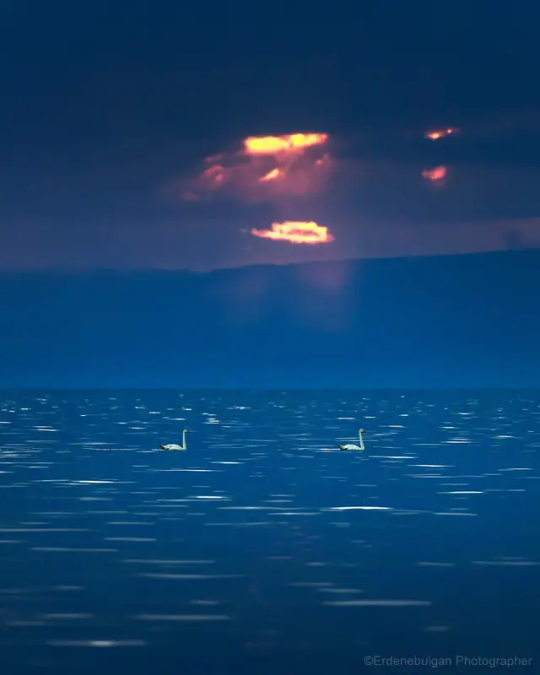
Couple swans in the Uvs lake at dawn, Uvs province @Erdenebulganphotography
1 note
·
View note
Video
youtube
0 notes
Note
seeing a lot of asks about the americas in amber skies and i’ve gotten kinda curious about my people so like. what’s up in laos
The indochinese peninsula is a region called Orias. It's one of the nicer places to live under the amber sky. China itself has a LOT of Teleths, so the surrounding regions like Laos and Myanmar and Mongolia are where most of the civilization is.
The civilization is quite multicultural and biologically diverse, the "Seven Pillars of Orias" being the main seven post-human strains/ethnic groups that have existed in the region for several thousand years.
Laos specifically has an aviocaprid strain, think herbivorous humans that evolved avian traits for traversing heavily mountainous, forested environments.
Its one of those regions that's in-between like five larger powers, so it's famous for being conquered, but never staying conquered. They've got a long tradition of hunters and revolutionary guerilla fighters. These days they make most of their money by keeping the extremely aggressive wildlife at bay long enough for trade barges to pass through the rivers lol.
They're known for having an unorthodox but surprisingly good cuisine. Lots of curried river grasses and cave fungi that are unique to the region.
234 notes
·
View notes
Note
oohhh. Please feel free to elaborate on wildlife and cheronbyl.
So basically in the years following the reactor meltdown, the Chernobyl exclusion zone has become an unexpected haven for wildlife. There are now a lot of animals there: deer and foxes and the like, but also a lot of species that are really rare in other parts of Europe, like European bison. There are actually so many boar and wolves that they've started to spread into nearby areas.
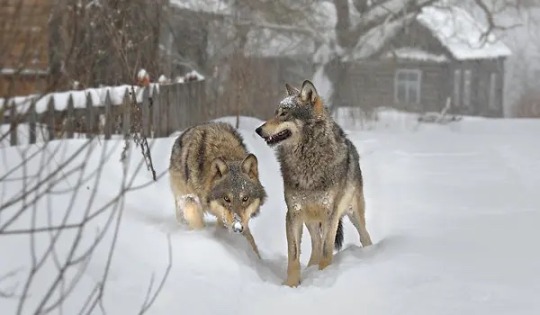
A pair of Wolves. Note the houses behind them.

Wisent, or European bison. They're threatened or endangered in many areas.
There are quire a few dogs and cats still in the area, from pets who unfortunately got left behind. Dogs of Chernobyl is an offshoot of the organization Clean Futures Fund, which has been doing a lot to care for the animals, providing food and medication, and to my knowledge a few of the animals have been able to be adopted.
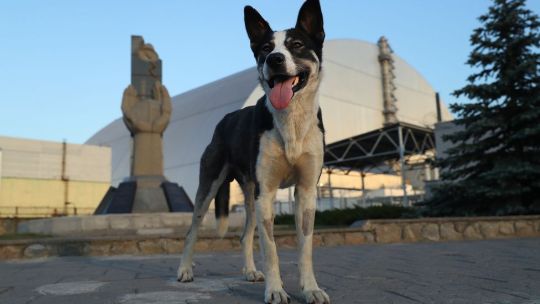
Thats' the reactor sarcophagus right behind him.
My favorite part is the fact that the Chernobyl exclusion zone is home to the only population of Przewalski's horses outside of Mongolia and China. They were introduced by a wildlife reserve in the late 90's in the hopes of improving biodiversity in the area. Przewalskis horses are the last truly wild horses (horses that have never been domesticated by humans) and they were extinct in the wild for most of the 20th century.

House for Horses
They've adapted pretty well to the zone, and they've even been seen using abandoned buildings as shelter!
As far as science goes, there's been some research into the ecology of the zone (a lot of it has been lost or put on hold now, due to the war). There's so much that we don't know about how the radiation effects the animals generation to generation, and how long term radiation exposure effects ecosystems as a whole. The radiation seems to be less of a danger than one might think, but there's a lot we don't fully understand.
As somebody who is studying conservation medicine in graduate school, this is something that really inspires me, and I would love to be involved with this kind of research and rewinding someday.
I tried to keep it short lol. Here's some good links if you'd like to read more. I can link scientific papers if anybody is interested too.
I'd also recommend following chornobyl_reserve on instagram: it's the official account of the Chernobyl Radiation and Ecological Biosphere Reserve, the reserve area of the zone. It's all in Ukrainian but they have stunning photos illustrating the diversity of the area.
And finally: right now, the animals and people in Chernobyl are in danger. If you're in a place to donate or provide assistance, this page has resources where you can help a number of reserves, protected areas and zoos during the war.
#the stag speaks#chernobyl#wolves#european bison#przewalskis horses#takhi#wisent#dogs#awesome animals#asks#teacat12
1K notes
·
View notes
Text
Hunted to extinction in the wild in the 1960s, today there are nearly 1,000 Przewalski’s horses at three sites in Mongolia, with more in China and Kazakhstan. The biggest population – numbering 423 – is in central Mongolia’s Hustai national park, the descendants of 84 animals airlifted from European zoos in the 1990s.
Each year they attract tens of thousands of visitors to this small patch of pristine mountain steppe just 100km from the capital, Ulaanbaatar.
“Before the reintroduction, nobody believed we could save this species,” says Dashpurev, who runs Hustai national park. Since then, the International Union for Conservation of Nature (IUCN) has downgraded the risk status of Przewalski’s horse twice: “Our biggest achievement,” he says.
The success stands in stark contrast to other parts of Mongolia. Over the past three decades, the country’s wildlife has been decimated by a combination of hunting, the climate crisis and overgrazing, with creeping desertification turning huge tracts of its vast grasslands into dust.
“Mongolia’s wildlife is in crisis,” says Tungaa Ulambayar, the local representative of the Zoological Society of London. “It is in real danger of being wiped out.”
27 notes
·
View notes
Text

A Male Saiga Antelope in Russia's Black Land National Park. These highly social antelope live in herds. Photograph By Valeriy Malee/Nature Picture Library
This Floppy-Nosed Antelope Was Nearly Gone. 20 Years Later, It’s Thriving.
Less than a decade ago, more than half of the world’s saiga antelope were lost to a mysterious disease. Its comeback is a rare and phenomenal conservation success.
— By Jason Bittel | December 14, 2023
Just two decades ago, it seemed as if we might need to write a eulogy for the saiga antelope.
Cut down by widespread poaching and waves of disease, by 2003, just 6 percent of the floppy-nosed ungulates remained in Kazakhstan, Mongolia, Russia, and Uzbekistan.
But today, scientists are rejoicing at the saiga’s unlikely rebound.
There are now 1.9 million saiga antelope across Eurasia, according to the most recent estimates released this week. So many saiga, in fact, that the International Union for Conservation of Nature is upgrading the Red List status for the species from critically endangered to near threatened.
“There's a lot of conservation doom and gloom, and there isn't very much attention paid to conservation successes,” says E.J. Milner-Gulland, a conservation scientist at the University of Oxford and co-founder of the U.K-based Saiga Conservation Alliance. “It’s quite a vindication of 20 years of hard work by lots of people.”
To get a sense of just how far this species has come, in 2015, more than half of the worldwide population of saiga antelope were lost to a mysterious blood disease.
“This is phenomenal news,” says Joel Berger, an ecologist at Colorado State University and a senior scientist at the Wildlife Conservation Society, in an email.
“At a time when so many species and populations are in deep swan dives, to witness the recovery of saiga—a species deserving of more recognition in its own right—is something we all need to celebrate,” he says.
The Saiga’s Downward Spiral
Those who have been paying attention to the saiga’s saga know that it’s been a wild ride.
“Twenty years ago, it had the fastest increase in threat status of any mammal,” says Milner-Gulland. “The population had plummeted by more than 90 percent over a really short time of a few years, so it went straight in at critically endangered.”
As for what happened, Milner-Gulland explains that the saiga’s downfall can be attributed to several factors. For starters, saiga horn has great value in China, Singapore, Vietnam, and Malaysia as a component in traditional medicine. And this demand, coupled with the breakup of the Soviet Union, led to a dramatic rise in hunting.
It’s a Symbol of the Wild Steppe, of Independence and Freedom.
— E.J. Milner-Gulland, Conservation Scientist at the University of Oxford
“The economies of these countries basically collapsed,” she says. “And they were living in very harsh conditions on the steppe. So they turned to poaching.”
Fencing along the border between Kazakhstan and Uzbekistan also put a barrier in the middle of the saiga’s migratory route, while infrastructure development cut into saiga habitat. Finally, an unknown trigger turned a naturally occurring microbe in the saiga’s characteristic nose into a virulent pathogen, leading to the mass die-offs.
It’s for all these reasons that the IUCN has chosen not to de-list the saiga completely.
“The near threatened category is right for the saiga, because we know that at any time, we could just get large numbers of them dropping dead again,” says Milner-Gulland. “They are very vulnerable.”
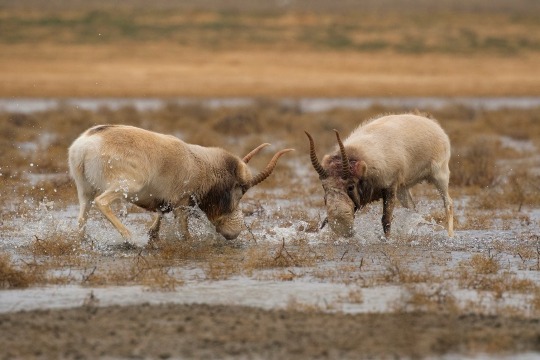
Male Saiga Antelope Battle in Black Lands National Park. Males and their horns are a specific target of poachers. Photograph By Valeriy Malee/Nature Picture Library
A Path to Recovery
Just as the threats to the saiga were multi-faceted, so too have been the efforts to protect the species, which are important seed dispersers and grazers that contribute to plant biodiversity.
For instance, an international collaboration between countries where saigas roam, countries that traditionally consume saiga products, and other stakeholder nations, including the United States, led to a memorandum of understanding in 2006 to conserve the species, restore its habitat, and restrict harvest to a sustainable level.
For its part, Kazakhstan’s government focused on stronger anti-poaching measures, including law enforcement to prevent saiga hunting. The Saiga Conservation Alliance supplied financing for gasoline, uniforms, motorbikes, and shelters for those rangers, who live in the harsh, windswept grasslands. Customs agents also improved detection of saiga products leaving the country as part of the illicit wildlife trade. Lastly, the country designated multiple protected areas totaling more than 12 million acres of saiga antelope habitat.
Now that economic conditions have leveled out and local people don’t have to choose between their own survival and saving saiga, there has also been a dramatic shift in support for the species.
“The thing about saiga is the local people really love it,” says Milner-Gulland. “It’s a symbol of the wild steppe, of independence and freedom.”
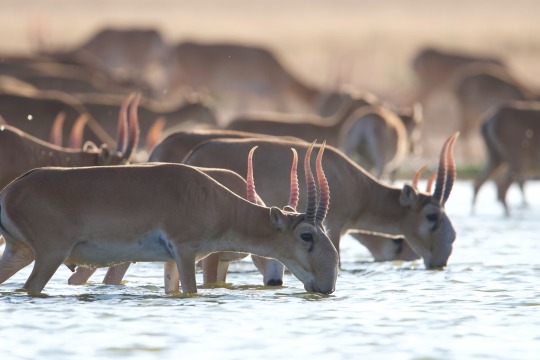
Saiga (Drinking on Southern Russia's Astrakhan Steppe) can migrate up to 600 miles over summer and winter. Photograph By Valeriy Malee/Nature Picture Library
#Animals 🦓 🦒 🐘#Floppy Nosed Antelope#Kazakhstan 🇰🇿 | Mongolia 🇲🇳 | Russia 🇷🇺 | Uzbekistan 🇺🇿#University of Oxford#Saiga Antelope#China 🇨🇳 | Singapore 🇸🇬 | Vietnam 🇻🇳 | Malaysia 🇲🇾#E.J. Milner-Gulland | Conservation Scientist | University of Oxford
36 notes
·
View notes
Text

A bearded vulture or lammergier (Gypaetus barbatus) nests in Mongolia
by Tumendelger Khumbaa
#bearded vulture#lammergier#vultures#raptors#birds#gypaetus barbatus#gypaetus#accipitridae#accipitriformes#aves#chordata#wildlife: mongolia#wildlife: asia
660 notes
·
View notes
Photo

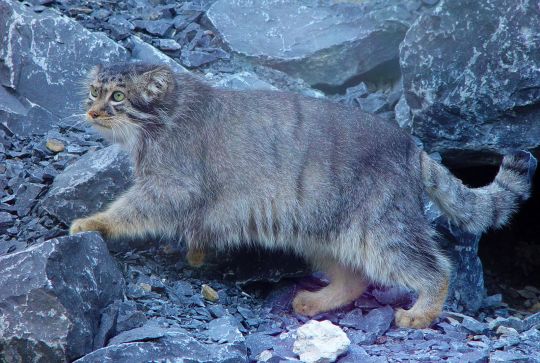

A Friend: The Pallus Cat
The pallus cat (Felis manul), originally known as the manul in Mongolia, is a species of small wild cat endemic to Central Asia. Their range is restricted to by their primary prey, pika (Ochotona sp.). These rodents only live in grasslands or rocky steppes, and so while the pallus cat may occasionally indulge in other rodents or small birds if they can catch them, they rely on the pika and thus almost exclusively live in rocky steppes or lowland areas up to an altitude of 4,800m. As predators themselves, F. manul face few natural threats, though large eagles and red foxes occasionally prey on kittens.
The body of the manul is round, exaggerated by its long, dense fur. In fact, F. manul has the longest, densest fur of any cat: hair on their back can grow to be 7cm in length, and some parts of the body have up to 9,000 hairs/cm2. All this serves to keep this species warm in central Asia’s frigid winters. Their fur is usually gray, with darker gray or light gold accents. Another exageratting feature of the pallas cat is its tail; the pallas cat’s total length is about 90cm, but their tail accounts for about a third of that length. Generally they don’t weigh much more than a house cat, at 2-5kg, despite their rotund appearance. However, one way to distinguish the pallas cat from house cats (and most other feline species) is that the pallas cat’s pupils contract in small circles, rather than slits.
Little is known about F. manul’s behavior, as they are both incredibly rare and extremely solitary. They are active mainly at night, and likely spend most of their time hunting. During the day, individuals seek shelter in caves and rocky crevices, or the abandoned dens of other animals if no other suitable shelter is available. Individuals maintain large territories, ranging from 20.9 to 207.0 km2. Usually one male’s territory will overlap or encompass that of several females, though they don’t interact outside mating.
Breeding only occurs once a year, and in a very short window as females are only reproductively receptive for about 3 days. Males become aggressive and territorial at the start of the breeding season, towards the end of winter, and mark areas with their scent to attract females. After mating, males and females go their separate ways. Pregnancies last 66-75 days, and mothers give birth to a litter of 3-6 kittens sometime between April and May. These kittens are initially blind and deaf, though they gain full senses and motor control after about a month. F. manul young start hunting when they’re only 5 months old, and become fully independent and sexually mature by the time they’re a year. The average lifespan is about 11-12 years.
Conservation status: Because they are hard to study in the wild, it’s difficult to make estimates about their population size. The IUCN ranks the pallas cat as Near Threatened, due to past hunting practices that targeted F. manul for its fur. Though hunting has been outlawed in Mongolia and China, the decline of pika due to rodent control measures is a serious threat to the pallas cat’s food source.
If you like what I do, consider buying me a ko-fi!
Photos
Steven Ross
Shanyuan Li (this photo actually won Wildlife Photographer of the year in 2020)
Karin Sturzenegger
#pallas cat#carnivora#felidae#small cats#felids#felines#cats#carnivores#mammals#grasslands#grassland mammals#mountains#mountain mammals#asia#central asia#animal facts#biology#zoology
263 notes
·
View notes
Photo

Horses gallop during a cultural demonstration at a breeding center in West Ujimqin Banner in Inner Mongolia.
PHOTOGRAPH BY PENG YUAN/XINHUA VIA GETTY
#peng yuan#photographer#xinhua via getty#horses#west ujimqin#inner mongolia#animals#mammals#wildlife#nature#national geographic
27 notes
·
View notes
Text
🌊Besitos del Mar leftover sales OPEN!🧜🏽♂️
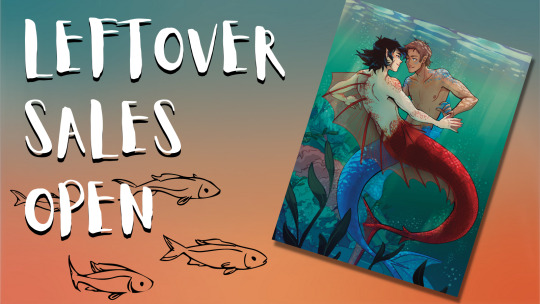
Leftover sales for Besitos del Mar, a Klance merfolk zine, are now open until May 13!
We have all our stock available, so if you’re interested in anything, make sure to grab yourself a copy before it’s too late! After May 13, leftover sales will be closed PERMANENTLY!
Proceeds after the cost of shipping will be donated to WIRES, an Australian-based non-profit group dedicated to helping in the rescue of native wildlife!





☀️Digital Zine Only: $15
☀️Physical Zine Only:
A-Grade zine: $23
13 in stock
B-Grade zine: $19
111 in stock
Digital add-on: +$3
☀️Full Bundle: $48-$55
Physical copy of the zine (A-grade or B-grade)
PDF copy of the zine
3 prints
3 die-cut stickers
2 buttons
Bookmark
Sticker sheet
2 acrylic charms
Enamel pin
☀️Individual Paper Merch:
Full bundle: $14
Digital add-on: +$7
Trio of prints: $5
17 in stock
Trio of die-cut stickers: $4.50
20 trios in stock
Misprinted flower sticker: $1
40 in stock
Bookmark: $2
25 in stock
Sticker sheet: $3
52 in stock
☀️Individual Hard Merch
Pair of buttons: $5
21 pairs in stock
Acrylic charm: $4
20 in stock
Dangle charm: $6
19 in stock
Enamel pin: $5
22 in stock
All prices are in USD
Please allow for up to 4 weeks for physical orders to be shipped and up to 2 weeks for digital orders to be sent out! Keep in mind that delays in order fulfillment could occur at any time, and we will make sure to notify everyone if that is the case!
Please keep in mind that we cannot ship to the following countries due to postal restrictions from the USA and any physical orders placed from said countries will be automatically refunded: Afghanistan, Belarus, Bhutan, Brunei, Darussalam, Lao People's Democratic Republic, Libya, Mongolia, South Sudan, Syrian Arab Republic, Ukraine, Iran, Sierra Leone, Timor-Leste, Turkmenistan, Yemen, Myanmar, Palestinian Territories, North Korea, Cuba, and the United Kingdom*
*We are able to ship the physical zine-only bundle to the UK, but not bundles involving merch due to issues with VAT restrictions.
🧜🏽♂️ PURCHASE ANY OF YOUR LEFTOVER STOCK HERE!
#zine#zine promo#zine leftovers#zine leftover sales#zine sales#zine leftover stock#fan zine#fandom zine#charity zine#lgbt zine#vld zine#voltron zine#klance zine#laith zine#lgbt#vld#voltron#klance#laith#merfolk zine#mermaid zine#merfolk#mermaids#mermaid#mermen#merman#klance au#vld au#voltron au#leftovers
13 notes
·
View notes
Text
also lys being a photographer is so funny to me because like. in my head she did okay on her exams! she’s not in the top percentile or anything but she could go to a decent university. but instead she decided for reasons that are a mystery to me to like. do photography as a full time job. and she’s been autistic about it for long enough to get some contract work and start to build a portfolio. and that’s why she’s in the middle of nowhere fucking i don’t know. mongolia or wherever the fuck the wang compound is. because she rented a jeep and dragged photography equipment into the woods so she can take some wildlife photos. absolutely unaware that she’s about to literally trip over her future girlfriend, half dead and covered in blood.
#actually saying all this makes me realise she’s sort of like a young wx#god i love lys#my ocs#lin yushan#c.txt
2 notes
·
View notes